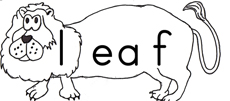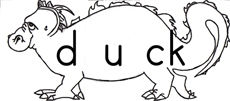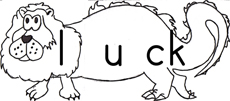![]()
Home | Crosswords | Word Searches | Flash Cards | Verbs | Songs | Creative Writing | Work Sheets | Phonics | ABCs Survival English | Business ESL | ESL for Adults | Articles for Teaching ESL | Lesson Plans | Young Learners ESL | ESL Jobs |
phoneme: a phoneme is the most basic unit of sound.
grapheme: a grapheme is the written representation of a phoneme. A grapheme can consist of one, two, and rarely three or four letters. The phoneme /k/ can be represented by the graphemes C, K, or CK as in cat, kite, and duck.
Note: The Phonics Monsters resources have been divided so that they follow a more logical progression that allows for easier game play. They now come in several different versions:
CVC Words| Consonant Digraphs | Long Vowels | Vowel Digraphs | R-Controlled Vowels
Phonic Monsters: An Explanation and Teaching Tips
The phonic monsters are a fun way to learn and practice phoneme-grapheme correspondences. The phonic monsters are a series of cards that contain most of the phonemes in the English language and most of the basic graphemes that are used to represents these phonemes. Words are composed of heads, bellies, and tails that represent an initial consonant, a vowel sound and a final consonant sound respectively. The important point is that the words are being seperated into their constituent phonemes (sounds) so even though some cards have two letters like SH or EE, the cards only contain a single sound. The heads, tails and bellies can be exchanged with different heads, tails, and bellies to make new words. The concept is best explained with illustrations.
The graphics to the right show how the head of the monster 'leaf', which is composed of three graphemes 'l', 'ea', and 'f', can be combined with the belly and tail of the monster 'duck', which is composed of three graphemes 'd', 'u', and 'ck', to form a new monster called 'luck'.
There are a number of activities and some really fun games that can be played with these cards. The cards can be used to both introduce and review the regular phoneme-grapheme correspondences. But it is important to think about which monster parts you want to introduce and when. Having all of the monsters out at once right at the start can make it difficult for students to form words. The downloads are below with some comments. Below the downloads are some links to game suggestions for using these resources.



Games and Activties
Change It!
One great activity to play is the game Phonics Change It! In this phonics game, students make words by removing either a head, body, or tail of a monster.
Phonics Rummy
In this phonics card game students try to form word sets and lay the sets down. There are a few variations.
Other Phonics Worksheet Sections:
initial sounds | final sounds | select patterns | vowel combinations
Other Spelling Worksheets:
Here is a selection of worksheets available for young learners young ESL learners:
Young Learners | ABC Cards | ABC Mazes | Connect-the-Dots | First Words | Alpha Trains
Little Letters | Big Letters | Opposites | Bingo | Flashcards | Holiday Worksheets
All materials (c) 2007 Lanternfish Phonics